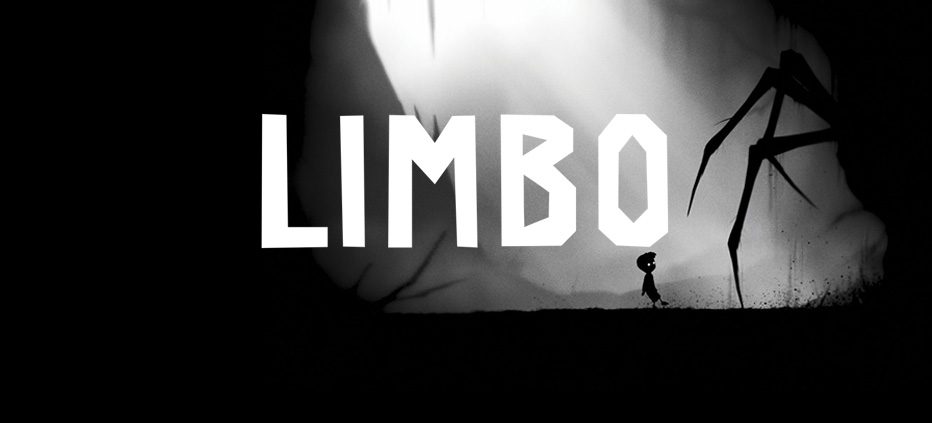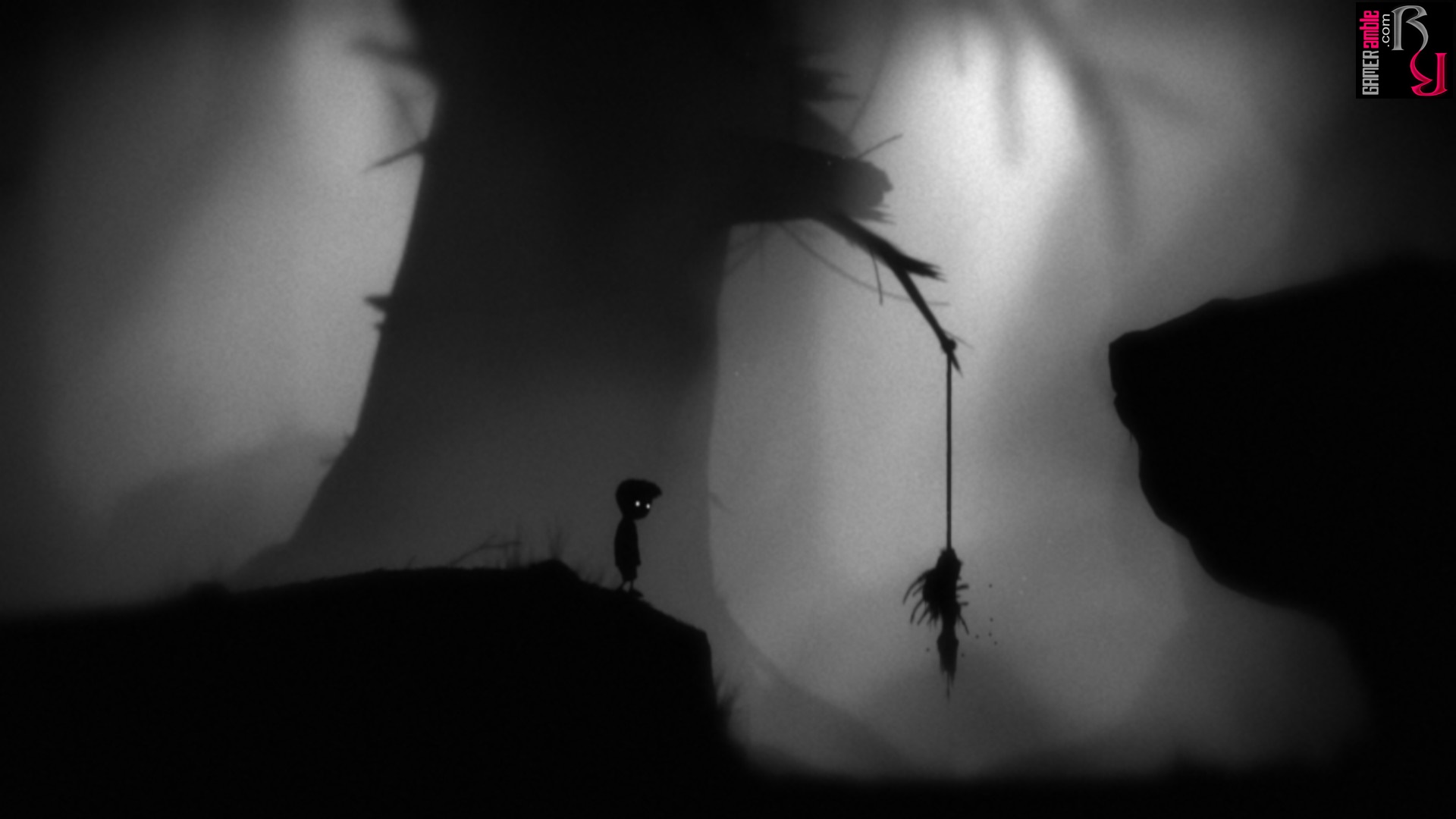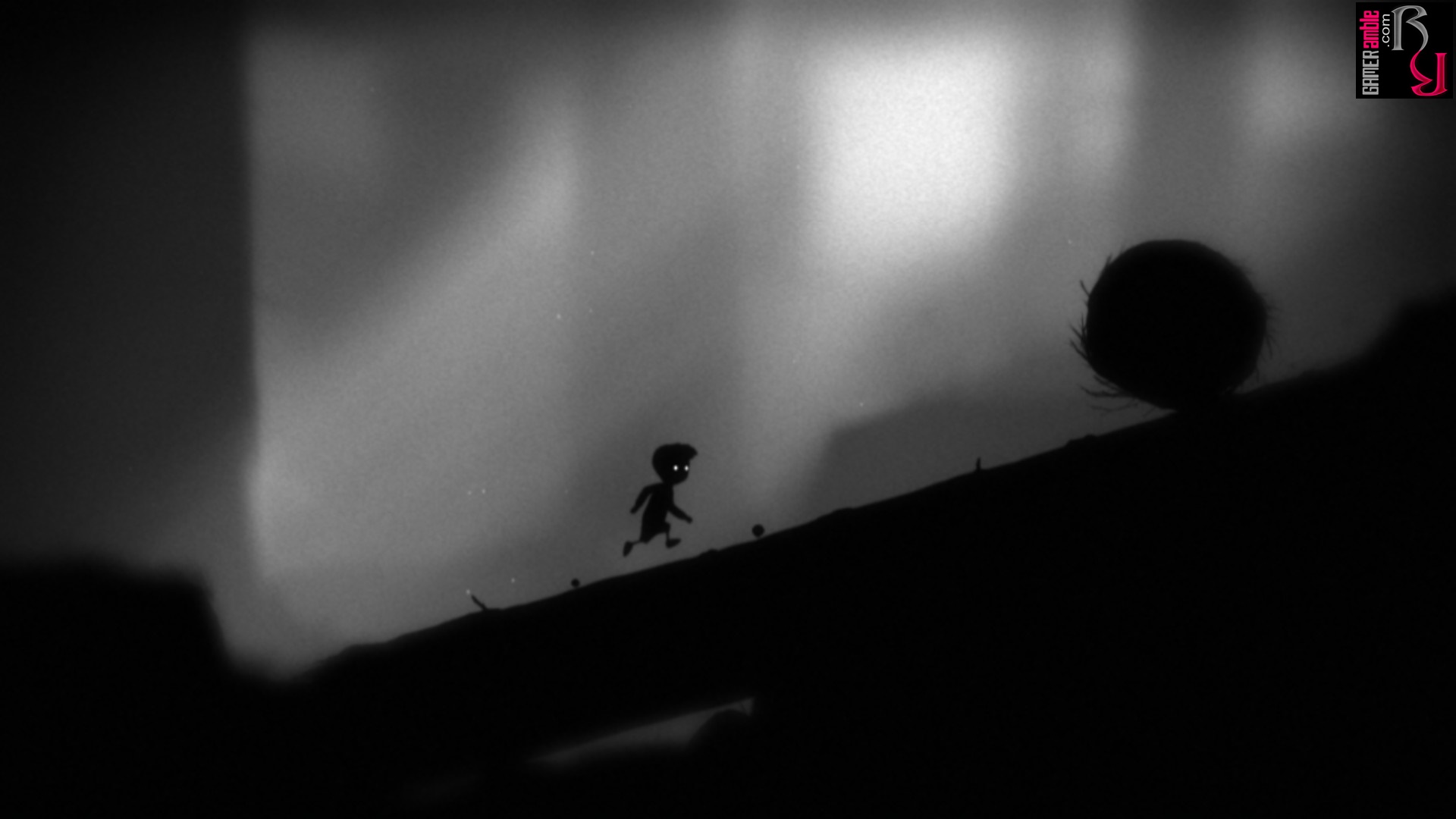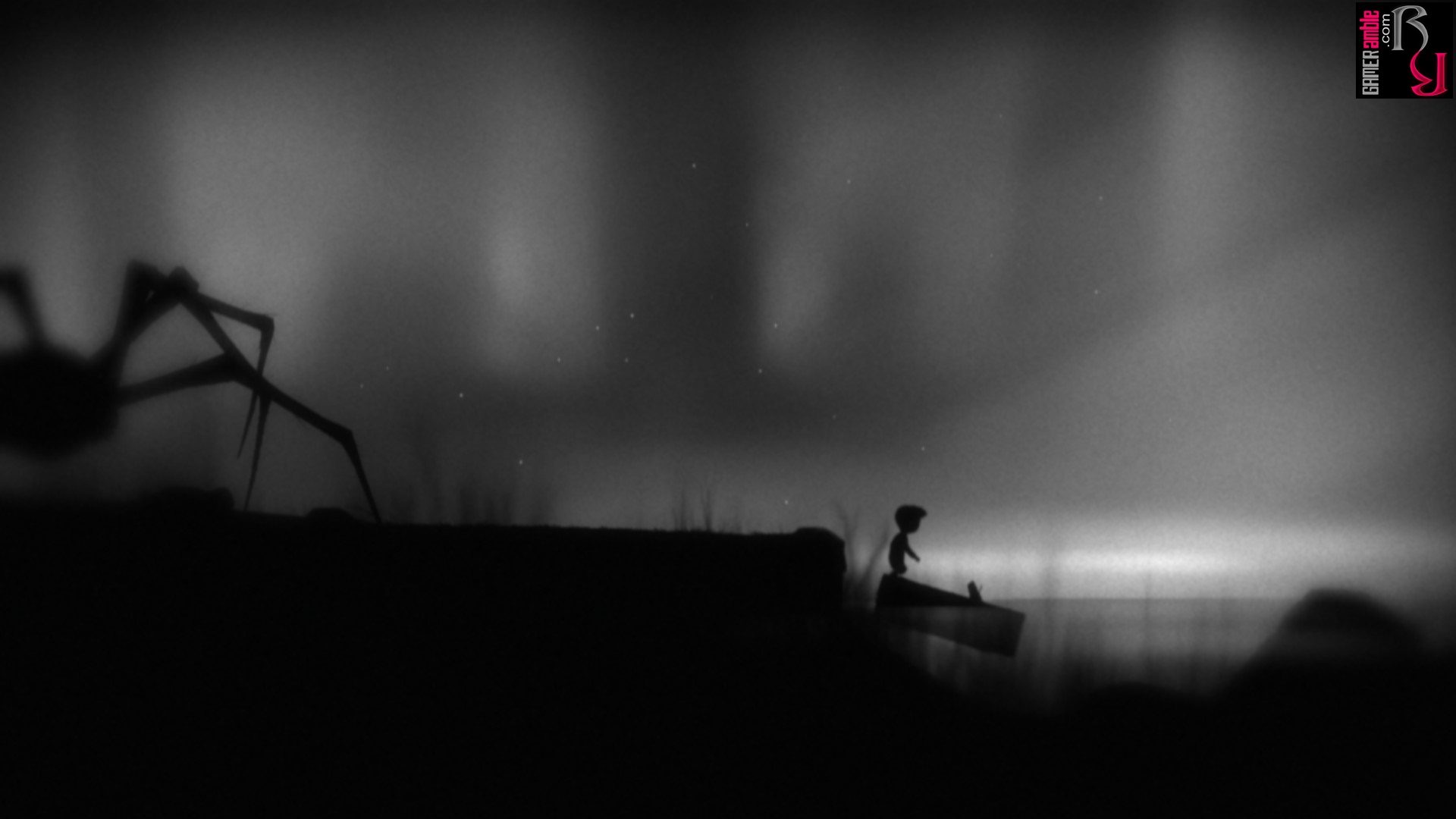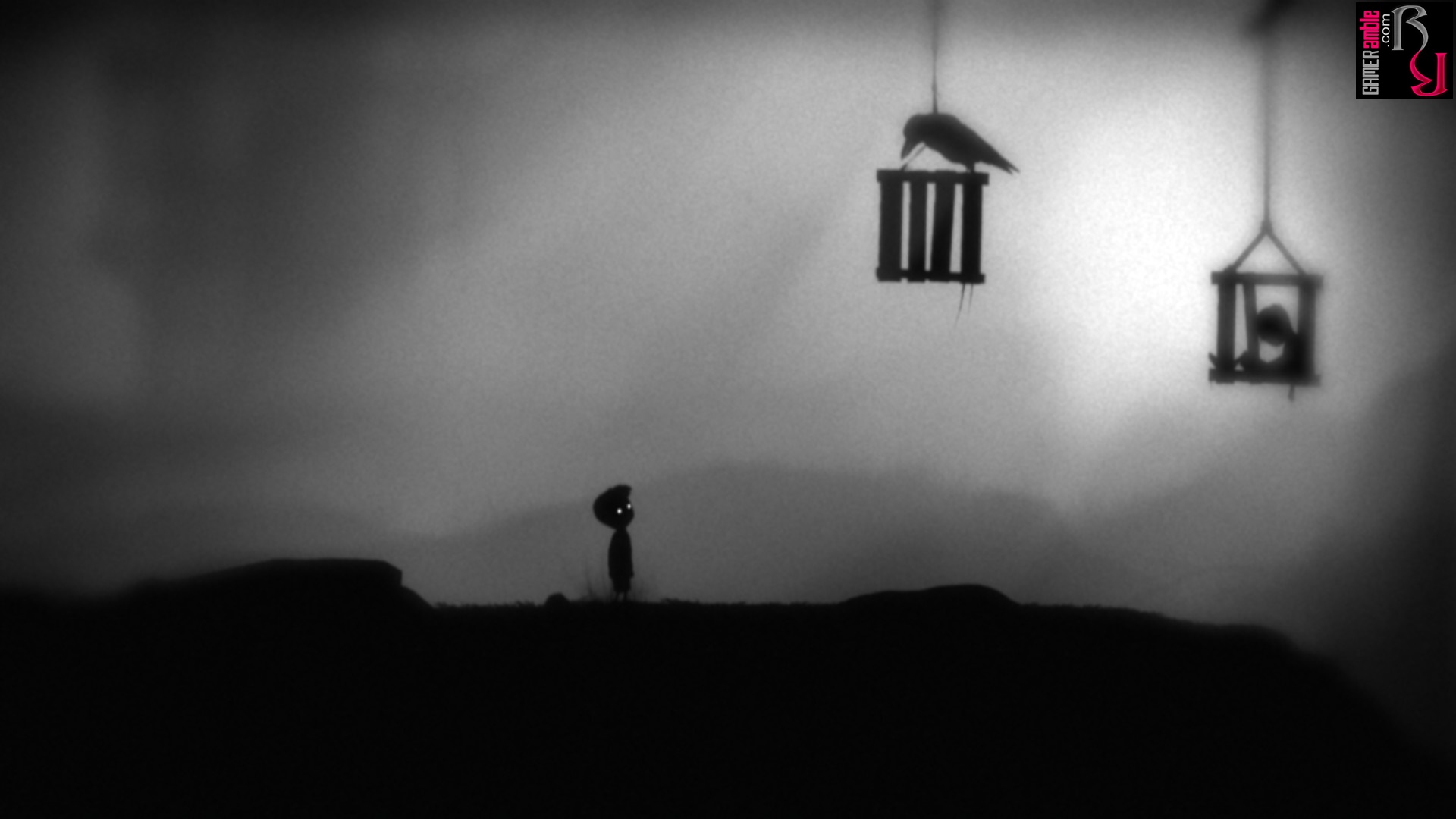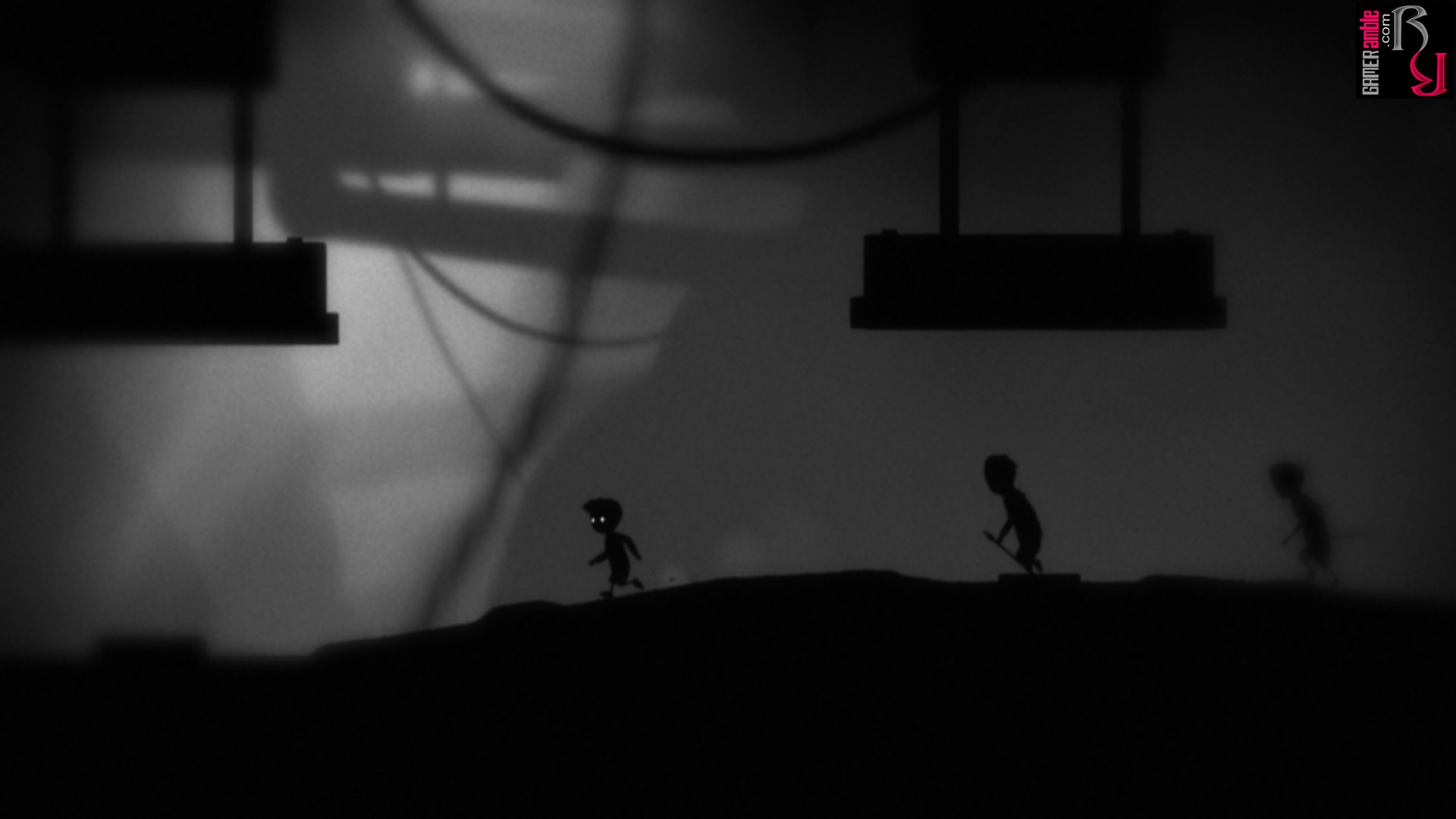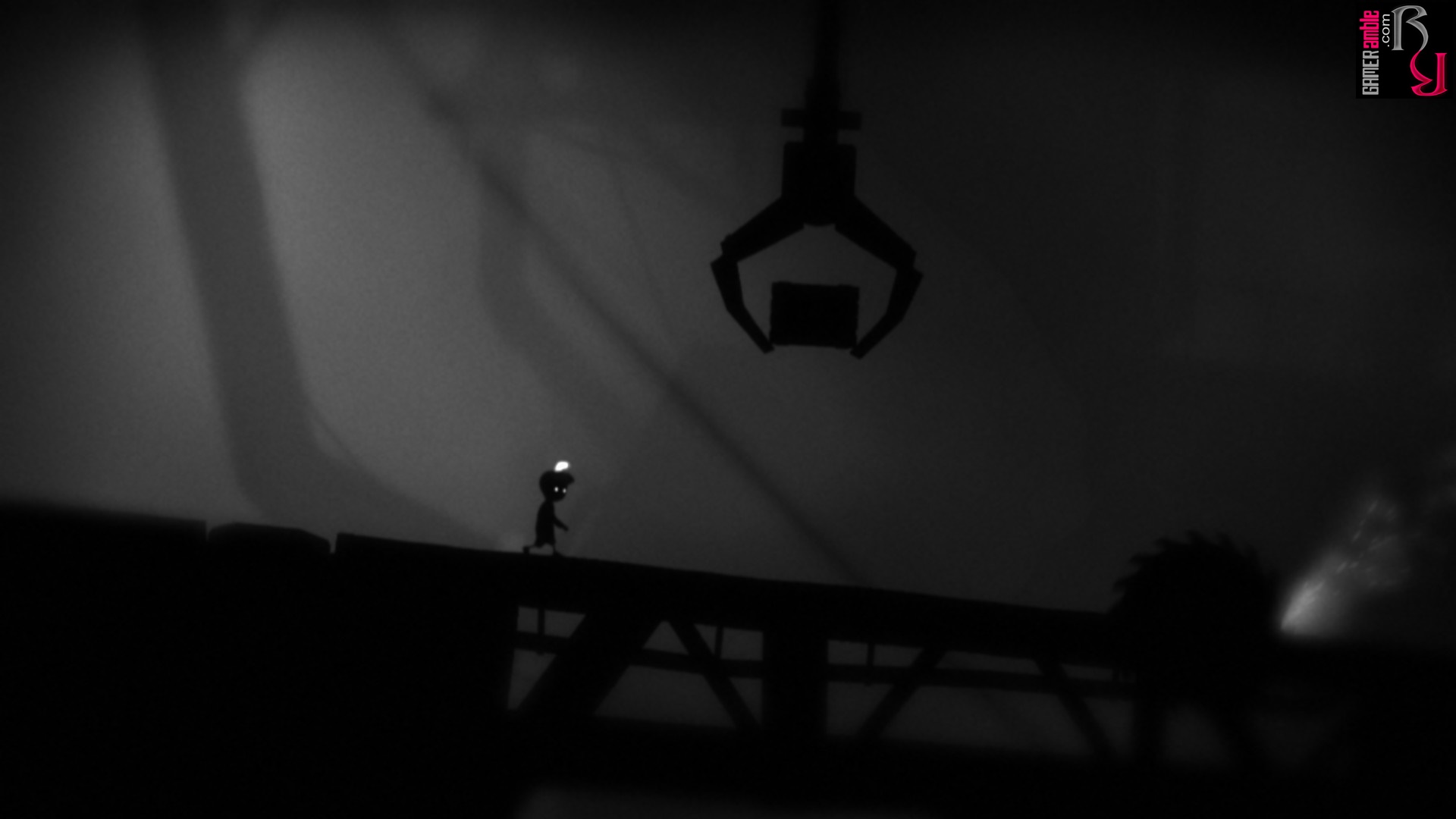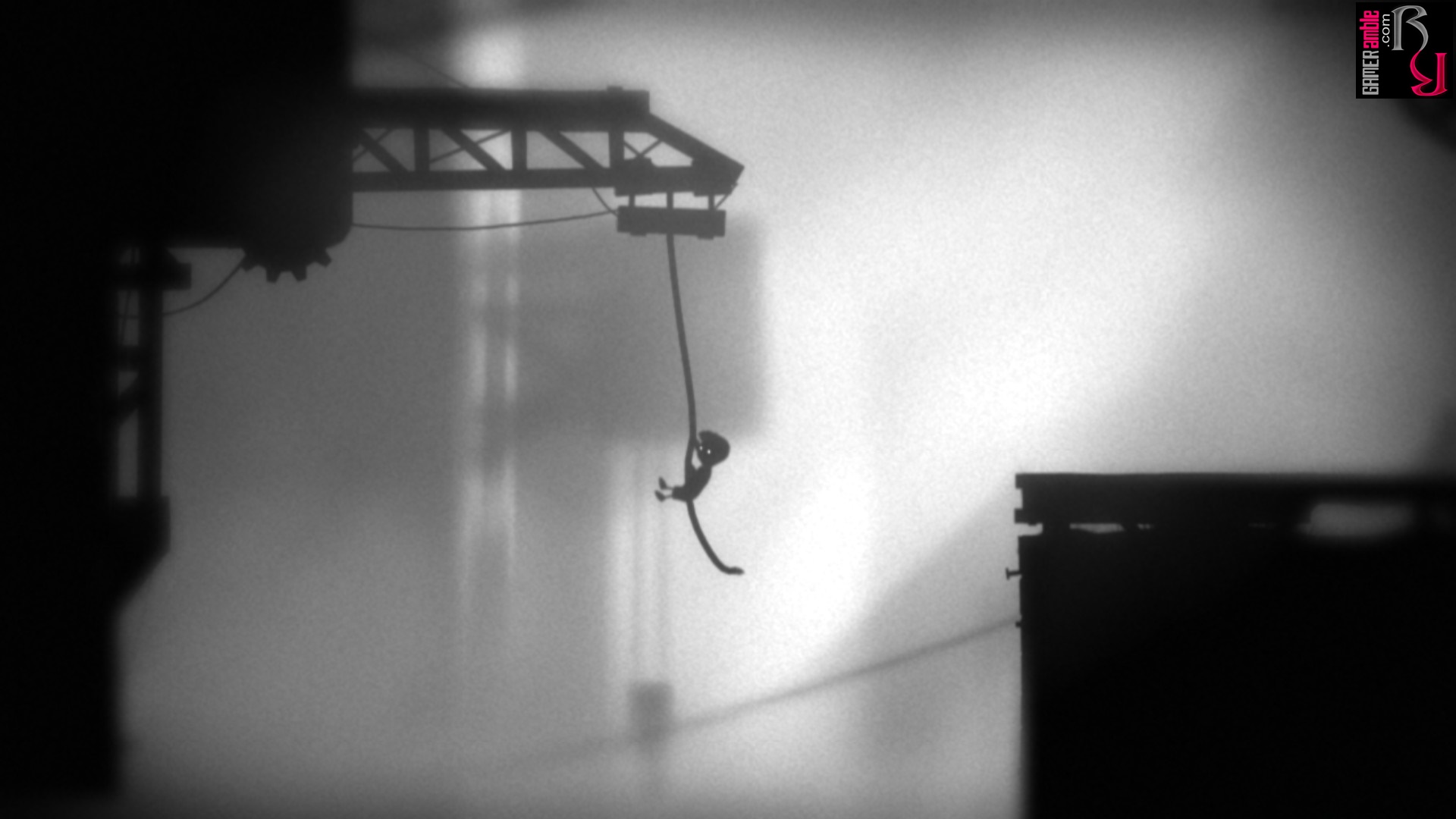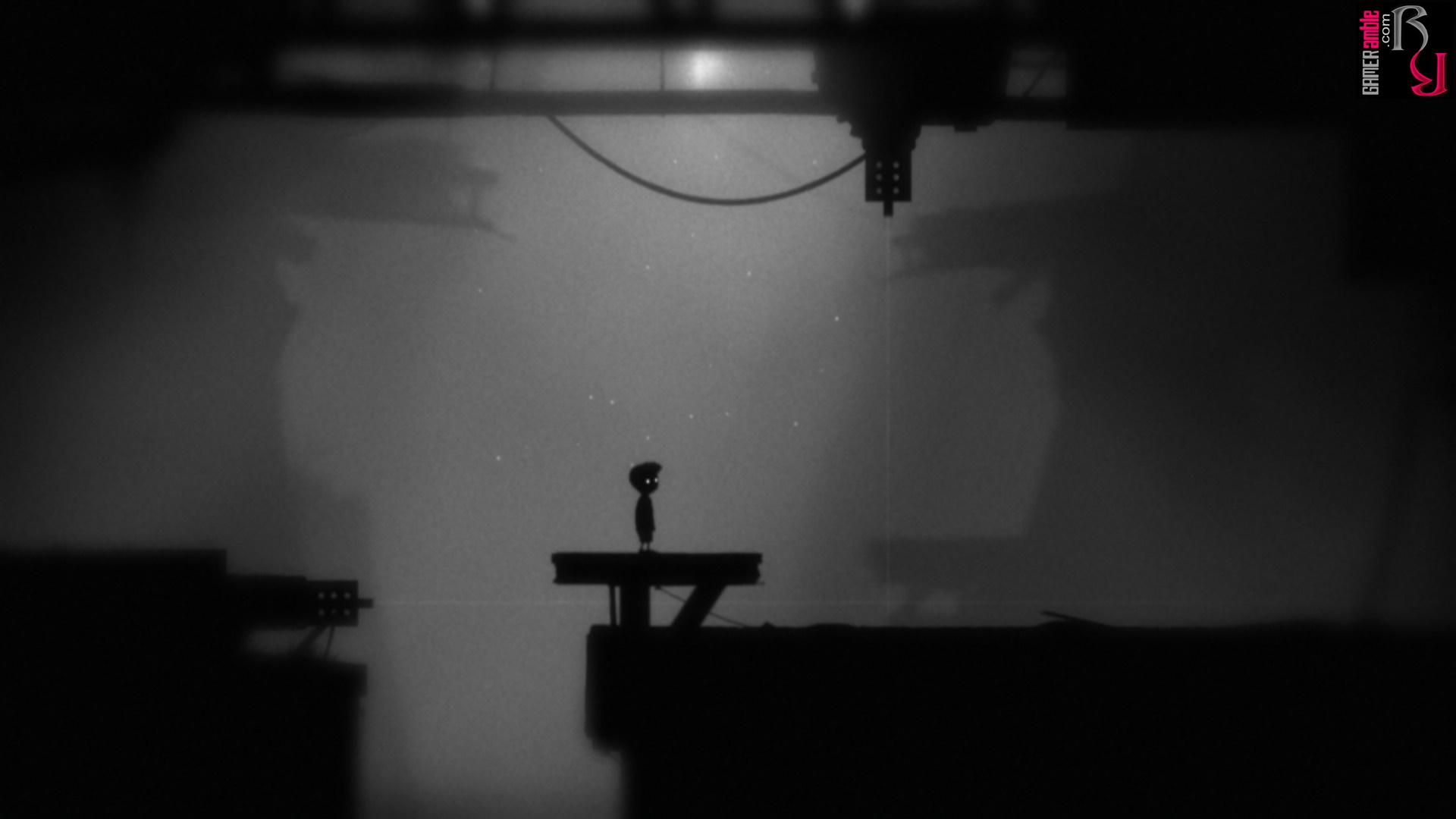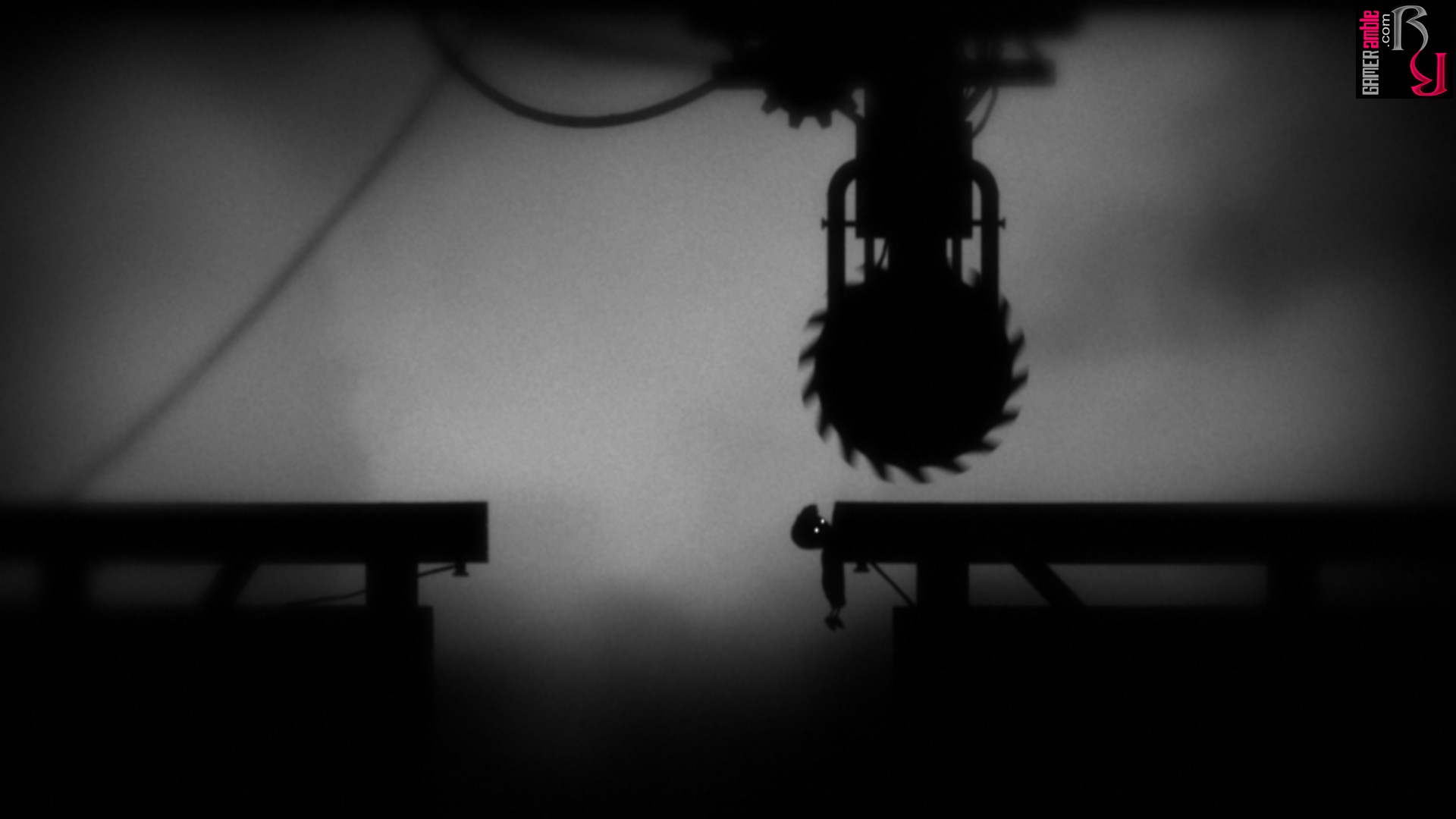Limbo
Developer: Playdead | Publisher: Playdead | Release Date: 2011 | Genre: Puzzle / Platformer / Indie | Website: Official Website | Purchase: Steam
“Uncertain of his sister’s fate, a boy enters Limbo.” This single sentence is the sole information that the developers of Limbo provide players interested in their game. Those brave enough to take on the challenge are given control of the aforementioned boy as he wakes up in a dark and foreboding forest. Like his creepy surroundings, the boy is a simple silhouette and only his glowing white eyes offer any indication that he is alive.
Limbo is a 2D side-scrolling puzzle platformer that takes players on a journey through eerie levels that are filled with traps and enemies. One of the first foes that the boy encounters is a giant spider that can quickly and gruesomely end his life. A small boy is obviously no match for such a dreadful arachnid, so players must use their reflexes and wit to outrun and outsmart the spider. Apart from the spider the only signs of life early on are other silhouetted figures that might be human, but try their best to kill the boy on sight. However, these early encounters soon give way to more desolate environments such as an abandoned city and industrial area where puzzles feature more prominently.
Limbo can be a very unforgiving game and it makes it very clear from the start that it expects players to die multiple times before they will be able to solve some of the puzzles. For example, a button on the floor might kill a player while another must be jumped on to proceed. Without trying both there’s no way to know what they will do. Fortunately, the game features frequent checkpoints, so after a rather gruesome animation of the boys’ demise, players can continue on their merry way. There are no lives or limitations on continues to worry about, which takes some of the sting out of the unfair deaths. The only caveat is that the game does not feature any difficulty options, tutorials, or hand-holding of any kind. Players must learn through trial and error or, more likely, by consulting online guides.
In addition to all the platforming, Limbo also has a physics system, which features heavily in some of the puzzles. Some levels even contain switches that can influence gravity or rotate the environment. These elements, coupled with some nasty traps and timed platforming sections can be frustrating and Limbo is not a game that is very beginner-friendly. The boy can jump and climb, as well as push and pull objects, which is required to reach certain platforms or to complete some puzzles. Players should be careful, though, as the boy is quite fragile and won’t survive long falls, getting submerged or making contact with the myriad of traps that range from spinning sawblades to electrified floors and even machine gun turrets.
Even more insidious are the worms that lurk in some sections as these will embed themselves in the boy’s head if he passes underneath him. This places him in a zombie-like state where he can only walk in one direction until he encounters rays of light that prompt the mind-controlling worm to turn him around. The only way to get rid of them is to walk underneath another type of ceiling-dwelling critter that can pluck out the worm and eat it, which frees the boy. Of course, this is easier said than done, and often timing is involved or even having to push or pull objects in complete darkness, using only the sound effects as a guide.
Visually, Limbo is a bleak game that only uses a grayscale palette. The color scheme is very moody and lends the game a very film-noir style, especially with the film grain type filter that is also present. Unfortunately, this color scheme also makes it easy to miss certain objects, such as bear traps, which will result in the dismemberment of the boy. The soundtrack favors a similar minimalist approach with acousmatic music accompanying all the action. This enhances the foreboding atmosphere of the game and playing with headphones comes highly recommended Those dedicated to finding all the hidden insect eggs in the game will also find themselves faced with a hidden level that is not just filled with traps, but also set almost completely in utter darkness. Here the sound effects play an even bigger role as they offer the only indication of where hazards are in relation to the boy. Walking in complete darkness with only the boy’s glowing eyes visible and then hearing the unmistakable sound of a buzzing sawblade heading your way is nerve-wracking, to say the least.
Limbo started as an Xbox Live Arcade game for the Xbox 360, before making the transition to PC. This means that it is best played with a controller as it is not possible to reconfigure the controls. Moving around with the arrow keys and interacting using the CTRL key is still serviceable, but we preferred being able to use a button to jump instead of having to press the up arrow key. Limbo also doesn’t offer much in the way of options as players can only adjust the brightness and nothing else. In terms of replay value, the game features the aforementioned hidden insect eggs, but fortunately, a chapter-select option makes it easier to find them. Unfortunately, the game is also very linear and after completing there’s little reason to go back. Those looking for a reason to do so can try and aim for the achievement that requires them to complete the game in one sitting with five or fewer deaths, but one playthrough should be enough for most players.
There’s no denying that Limbo was a groundbreaking game for its time and its style and formula have since been imitated by many other titles. Nevertheless, it’s hard to ignore that the controls can be a little stiff and that the ending is rather abrupt. Some players might also appreciate the minimalist approach to storytelling while others will feel cheated out of any sort of explanation in terms of what is going on. Limbo is definitely a must-play for fans of puzzle platformers, especially those who want to challenge themselves, but more casual players will find it to be a frustrating experience.
System Requirements
- Minimum PC System Requirements
- Minimum Mac OS X System Requirements
- Minimum SteamOS + Linux System Requirements
- OS: Windows XP, Vista, 7
- Processor: 2 GHz
- Memory: 512MB
- Hard Disk Space: 150MB
- Video Card: 5 years or younger. Integrated graphics and very low budget cards may not work. Shader Model 3.0 required
- DirectX®: 9.0c
-
- Mavericks 10.9 or later required.
SUPPORTED MODELS:
-
- iMac (Mid 2007 or later)
- MacBook (Aluminum, Late 2008 or later)
- MacBook Air (Late 2008 or later)
- MacBook Pro (Mid 2007 or later)
- Mac Mini (Early 2009 or later)
- Mac Pro (Early 2008 or later)
- OS: SteamOS, Ubuntu 12.04 or later, or otherwise compatible Linux distribution.
- Processor: 2GHz
- Memory: 1 GB RAM
- Hard Disk Space: 150MB
- Video Card: OpenGL 2.0 compatible video card with 256 MB shared or dedicated RAM

